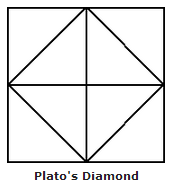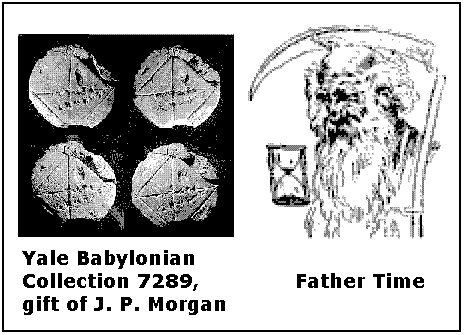
From a search in this journal for Babylon . . .
— and Toorop with Aurora —

How many miles to Babylon?*
Three score miles and ten.
Can I get there by candle-light?**
Yes, and back again.
Mary Gaitskill's latest substack meditation —
"I am thinking of Susan Sontag, writer, philosopher,
political activist and some-time pain in the ass;
she went to Sarajevo during the siege in order to
put on a theatrical production of Waiting for Godot.
She didn’t get paid and none of the actors did either.
They rehearsed in the dark and performed by sparse
candlelight . . . ."
"How many bananas ?"
"Drei . . . or else Vier ."
See also the comedy writers of Elsevier —
From a Thursday morning, Oct. 21, Instagram post —
Related cinematic meditation —
The above scene is from Babylon A.D. (August 2008).
Related question from an early edition of Trivial Pursuit —
"Does Uranus have an aurora?"
Related drama for Brechtians — Branded , The Zero Theorem ,
and, from my own efforts of August 2008 . . .

The following image was suggested by today’s
New York Times obituary of Joanna Harcourt-Smith
and by earlier Log24 posts now also tagged Grossinger.
For some background, see a book that reportedly
was published on Devil’s Night (October 30) 1997 —
The interview date above suggests some related material
for students of bullshit and for the Church of Synchronology —
"Kiernan Brennan Shipka (born November 10, 1999)
is an American actress. She is best known for starring as
Sabrina Spellman on the Netflix supernatural horror series
Chilling Adventures of Sabrina (2018–present)." — Wikipedia
As noted here earlier, Shipka turned 18 on Nov. 10 last year.
From Log24 on that date —
Another 18th birthday in Story Space —
“Johann Georg Hamann (1730-88) is, by any measure, an obscure figure,
little known outside the exclusive circles of a certain very rarefied kind of
scholarship, hardly read at all even in his native Germany, and perhaps
truly understood by next to no one. And yet . . . .”
— “The Laughter of the Philosophers,” by David Bentley Hart,
First Things , January 2005
Update at 7 the same morning . . .
Meanwhile, back in 1963 —
… and at 7:15 the same morning, from a different Cambridge —
Nian Hu in The Harvard Crimson this morning, Oct. 16:
"Hey Harvard, it’s Friday and it’s the weekend again–
though sadly, not another three-day one. On this day
in 1844, Friedrich Nietzsche was born. Remember
his wise words 'That which does not kill us, makes us
stronger' when prepping for midterms this weekend."
A fact check shows that Nietzsche was born yesterday .
A source check shows that the Nietzsche quote is from a book
with alternative title "How to Philosophize with a Hammer."
Click on the image below for related materal.
… But not for lack of trying. Click the image for details of the inset.
"Passion simmers,
Then it boils.
To the victor
Go the spoils."
— The Spoils of Babylon
(theme song, adapted)
Compare and contrast:
"… my song sounded
In the four-towered Caer, forever turning,
And of its Cauldron was my first song sung:
Nine maidens kindle the Cauldron by their breathing.
Of what nature is the Lord of Annwn’s Cauldron?
Enameled iridescence and pearly white its rim.
It will not boil the coward’s portion – not so its destiny."
— The Spoils of Hell
(title adapted)
Vigil for a teacher slain yesterday —
"Another student tweeted today to bring a candle
to Danvers High School at 8 p.m. tonight."
"How many miles to Babylon?"
From an academic's website:
For Josefine Lyche and Ignotus the Mage,
as well as Rose the Hat and other Zingari shoolerim —
Sabbatha hanti, lodsam hanti, cahanna risone hanti :
words that had been old when the True Knot moved
across Europe in wagons, selling peat turves and trinkets.
They had probably been old when Babylon was young.
The girl was powerful, but the True was all-powerful,
and Rose anticipated no real problem.
— King, Stephen (2013-09-24).
Doctor Sleep: A Novel
(pp. 278-279). Scribner. Kindle Edition.
From a post of November 10, 2008:

Twenty-four Variations on a Theme of Plato,
a version by Barry Sharples based on the earlier
kaleidoscope puzzle version of Steven H. Cullinane
"The king asked, in compensation for his toils
during this strangest of all the nights he had
ever known, that the twenty-four riddle tales
told him by the specter, together with the story
of the night itself, should be made known
over the whole earth and remain eternally
famous among men."
Frame Tale:
"The quad gospellers may own the targum
but any of the Zingari shoolerim may pick a peck
of kindlings yet from the sack of auld hensyne."
The Mathematical Association of America (MAA)
newsmagazine Focus for December 2012/January 2013:

The Babylonian tablet on the cover illustrates the
"Mathematical Treasures" article.
A search for related material yields a Babylonian tablet
reproduced in a Brazilian weblog on July 4, 2012:

In that weblog on the same day, July 4, 2012,
another post quotes at length my Diamond Theory page,
starting with the following image from that page—

That Brazilian post recommends use of geometry together
with Tarot and astrology. I do not concur with this
recommendation, but still appreciate the mention.
From Saturday Night Live last night—
Related material from the Log24 post "Now Lens"
(March 11, 2011)—
Errol Morris in The New York Times on March 9, 2011—
"If everything is incommensurable, then everything
is seen through the lens of the present, the lens of now ."
"Borges concluded by quoting Chesterton, 'there is nothing
more frightening than a labyrinth that has no center.' [72]"
See also Borges on Shakespeare, everything, and nothing
in a note from September 7, 2006.
Everything and nothing in Peter J. Cameron's weblog yesterday—
The existence of everything entails the existence of nothing;
indeed, the existence of anything (any set A) entails
the existence of the empty set (the set {x∈A:x≠x}).
But not the other way round.
Right, I had better put on my anorak and go out now …
Illustration added by m759—
How many miles to Babylon?*
Three score miles and ten.
Can I get there by candle-light?**
Yes, and back again.
* Suggested by the Pindar link in this journal yesterday.
** Quoted in the "Seven is Heaven" post on All Souls' Day.
A passage from the Benjamin Jowett translation of Plato's Meno—
" 'For in the ninth year* Persephone sends the souls of those from whom she has received the penalty of ancient crime back again from beneath into the light of the sun above, and these are they who become noble kings and mighty men and great in wisdom and are called saintly heroes in after ages ⋄ .' The soul, then, as being immortal, and having been born again many times, and having seen all things that exist, whether in this world or in the world below, has knowledge of them all; and it is no wonder that she should be able to call to remembrance all that she ever knew about virtue, and about everything; for as all nature is akin, and the soul has learned all things; there is no difficulty in her eliciting or as men say learning, out of a single recollection all the rest, if a man is strenuous and does not faint; for all enquiry and all learning is but recollection."
* See this journal nine years ago, in August 2003.
⋄ Jowett's note— "Pindar, Frag. 98 (Boeckh)"
Wikipedia authors like Protious, an alleged resident of Egypt and
creator of The Socrates Swastika , may enjoy a less scholarly account:
From Babylon A. D. (a 2008 film)— Toorop with Egyptian Sacred Scarab tattoo—

— and Toorop with Aurora (who may be regarded as "the soul" in the Meno passage above)—

Toorop's neck tattoo in the second image above is from a fictional book
described in the writings of H. P. Lovecraft.
As swastika-like sacred symbols go, I prefer St. Bridget's Cross.
Last evening's New York Lottery numbers were 123 and 5597.
The 123 suggests page 123 of DeLillo's Underworld .
(For some context, see searches in this journal for Los Muertos and for Pearly Gates of Cyberspace .)
The 5597 suggests the birth date of literary theorist Kenneth Burke— May 5, 1897.
These two topics—
are combined in Heaven's Gate, a post from April 11, 2003—
Babylon = Bab-ilu, “gate of God,” Hebrew: Babel or Bavel.”
|
Modern rendition |
Kenneth |
The above observations on lottery hermeneutics, on a ridiculously bad translation, and on Latin rhythms did not seem worth recording until…
The New York Times Book Review for Sunday, October 30, arrived this morning.
From page 22, an extract from the opening paragraph of a review titled…
Making Sense of It
David Bellos offers a new approach to translation.
The theory of translation is very rarely— how to put this?— comical. Its mode is elegy, and severe admonishment…. You can never, so runs the elegiac argument, precisely reproduce a line of poetry in another language…. And this elegiac argument has its elegiac myth: the Tower of Babel, where the world's multiplicity of languages is seen as mankind's punishment— condemned to the howlers, the faux amis , the foreign menu apps. Whereas the ideal linguistic state would be the lost universal language of Eden.
See also Saturday's Edenville.
Where Entertainment Is God continues...
New York Lottery today— Midday 710, Evening 563.
This suggeests a scientific note from the date 7/10 (2009) and the page number 563 from Dec. 29—
Bulletin of the American Mathematical Society , October 2002, p. 563:
“To produce decorations for their weaving, pottery, and other objects, early artists experimented with symmetries and repeating patterns. Later the study of symmetries of patterns led to tilings, group theory, crystallography, finite geometries, and in modern times to security codes and digital picture compactifications. Early artists also explored various methods of representing existing objects and living things. These explorations led to… [among other things] computer-generated movies (for example, Toy Story ).”
– David W. Henderson, Cornell University
For a different perspective on Toy Story , see the Dec. 29 post.
Other entertainments — The novel Infinite Jest and two versions of "Heeere's Johnny !" —
From Stanley Kubrick and from today's New York Times :

See also All Things Shining and the lottery theology of Jorge Luis Borges.
Smart* Jewish Girl

See Galchen's essay on Stevenson and Borges
on the last page of today's New York Times Book Review.
With Typewriter
|
Photo from Flickr.com |
See also Borges's "Lottery in Babylon."
"Like all men of the Library,
I have traveled in my youth."
— Jorge Luis Borges,
The Library of Babel
"Papá me mandó un artículo
de J. G. Ballard en el que
se refiere a cómo el lugar
de la muerte es central en
nuestra cultura contemporánea."
— Sonya Walger,
interview dated September 14
(Feast of the Triumph of the Cross),
Anno Domini 2006

Sonya Walger,
said to have been
born on D-Day,
the sixth of June,
in 1974
Walger's father is, like Borges,
from Argentina.
She "studied English Literature
at Christ Church College, Oxford,
where she received
a First Class degree…. "
"… un artículo de J. G. Ballard…."–
A Handful of Dust, by J. G. Ballard
(The Guardian, March 20, 2006):
"… The Atlantic wall was only part of a huge system of German fortifications that included the Siegfried line, submarine pens and huge flak towers that threatened the surrounding land like lines of Teutonic knights. Almost all had survived the war and seemed to be waiting for the next one, left behind by a race of warrior scientists obsessed with geometry and death.
Death was what the Atlantic wall and Siegfried line were all about….
… modernism of the heroic period, from 1920 to 1939, is dead, and it died first in the blockhouses of Utah beach and the Siegfried line…
Modernism's attempt to build a better world with the aid of science and technology now seems almost heroic. Bertolt Brecht, no fan of modernism, remarked that the mud, blood and carnage of the first world war trenches left its survivors longing for a future that resembled a white-tiled bathroom. Architects were in the vanguard of the new movement, led by Le Corbusier and the Bauhaus design school. The old models were thrown out. Function defined form, expressed in a pure geometry that the eye could easily grasp in its entirety."


"This is the garden of Apollo,
the field of Reason…."
— John Outram, architect
(Click on picture for details.)

Related material:

In memory of Akkadian scholar
Erica Reiner, who died at 81 on
December 31, 2005.
— Gil Stein, director of the Oriental Institute at the University of Chicago
Earendil_Silmarils:

Les Anamorphoses:

"Pour construire un dessin en perspective,
le peintre trace sur sa toile des repères:
la ligne d'horizon (1),
le point de fuite principal (2)
où se rencontre les lignes de fuite (3)
et le point de fuite des diagonales (4)."
_______________________________
Serge Mehl,
Perspective &
Géométrie Projective:
"… la géométrie projective était souvent
synonyme de géométrie supérieure.
Elle s'opposait à la géométrie
euclidienne: élémentaire…
La géométrie projective, certes supérieure
car assez ardue, permet d'établir
de façon élégante des résultats de
la géométrie élémentaire."
Similarly…
Finite projective geometry
(in particular, Galois geometry)
is certainly superior to
the elementary geometry of
quilt-pattern symmetry
and allows us to establish
de façon élégante
some results of that
elementary geometry.
Other Related Material…
from algebra rather than
geometry, and from a German
rather than from the French:
"This is the relativity problem:
to fix objectively a class of
equivalent coordinatizations
and to ascertain
the group of transformations S
mediating between them."
— Hermann Weyl,
The Classical Groups,
Princeton U. Press, 1946

Evariste Galois
Weyl also says that the profound branch
of mathematics known as Galois theory
"Perhaps every science must
start with metaphor
and end with algebra;
and perhaps without metaphor
there would never have been
any algebra."
For metaphor and
algebra combined, see
A.M.S. abstract 79T-A37,
Notices of the
American Mathematical Society,
February 1979, pages A-193, 194 —
the original version of the 4×4 case
of the diamond theorem.
"When approaching unfamiliar territory, we often, as observed earlier, try to describe or frame the novel situation using metaphors based on relations perceived in a familiar domain, and by using our powers of association, and our ability to exploit the structural similarity, we go on to conjecture new features for consideration, often not noticed at the outset. The metaphor works, according to Max Black, by transferring the associated ideas and implications of the secondary to the primary system, and by selecting, emphasising and suppressing features of the primary in such a way that new slants on it are illuminated."
— Paul Thompson, University College, Oxford,
The Nature and Role of Intuition
in Mathematical Epistemology
That intuition, metaphor (i.e., analogy), and association may lead us astray is well known. The examples of French perspective above show what might happen if someone ignorant of finite geometry were to associate the phrase "4×4 square" with the phrase "projective geometry." The results are ridiculously inappropriate, but at least the second example does, literally, illuminate "new slants"– i.e., diagonals– within the perspective drawing of the 4×4 square.
Similarly, analogy led the ancient Greeks to believe that the diagonal of a square is commensurate with the side… until someone gave them a new slant on the subject.
Heaven’s Gate
“Rhetoric is concerned with the state of Babel after the Fall.”
— Kenneth Burke, A Rhetoric of Motives, quoted by Douglas Robinson at the site Linguistics and Language
“Location: present-day Iraq, between the Tigris and Euphrates
Cities: Babylon, founded 2300 BC, 70 miles south of present Baghdad, on the Euphrates….
Babylon = Bab-ilu, “gate of God,” Hebrew: Babel or Bavel.”
|
Modern rendition |
Kenneth |
Perhaps the real heaven’s gate is at
Instant karma update:
At 5:09 PM I read the following in the New York Review of Books, dated May 1, 2003, which arrived today.
From a review of Terror and Liberalism, by Paul Berman:
“As a general analysis of the various enemies of liberalism, and what ties them together, it is superb. All — Nazis, Islamists, Bolsheviks, Fascists, and so on — are linked by Berman to the ‘ur-myth’ of the fall of Babylon.”
Speaking of Ur, Berman likes to quote a non-Biblical Abraham, named Lincoln. The first, Biblical, Abraham was a damned homicidal lunatic, and the later American Abraham also delighted in blood sacrifice. But that’s just my opinion. For a different view, see the Chautauqua Abrahamic Program.
ART WARS:
From The New Yorker, issue of March 17, 2003, Clive James on Aldous Huxley:
“The Perennial Philosophy, his 1945 book compounding all the positive thoughts of West and East into a tutti-frutti of moral uplift, was the equivalent, in its day, of It Takes a Village: there was nothing in it to object to, and that, of course, was the objection.”
For a cultural artifact that is less questionably perennial, see Huxley’s story “Young Archimedes.”
Plato, Pythagoras, and
|
From the New Yorker Contributors page for St. Patrick’s Day, 2003:
“Clive James (Books, p. 143) has a new collection, As of This Writing: The Essential Essays, 1968-2002, which will be published in June.”
See also my entry “The Boys from Uruguay” and the later entry “Lichtung!” on the Deutsche Schule Montevideo in Uruguay.
|
Plato's |
|
From The Unknowable (1999), by Gregory J. Chaitin, who has written extensively about his constant, which he calls Omega:
"What is Omega? It's just the diamond-hard distilled and crystallized essence of mathematical truth! It's what you get when you compress tremendously the coal of redundant mathematical truth…"
Charles H. Bennett has written about Omega as a cabalistic number.
Here is another result with religious associations which, historically, has perhaps more claim to be called the "diamond-hard essence" of mathematical truth: The demonstration in Plato's Meno that a diamond inscribed in a square has half the area of the square (or that, vice-versa, the square has twice the area of the diamond).
From Ivars Peterson's discussion of Plato's diamond and the Pythagorean theorem:
"In his textbook The History of Mathematics, Roger Cooke of the University of Vermont describes how the Babylonians might have discovered the Pythagorean theorem more than 1,000 years before Pythagoras.
Basing his account on a passage in Plato's dialogue Meno, Cooke suggests that the discovery arose when someone, either for a practical purpose or perhaps just for fun, found it necessary to construct a square twice as large as a given square…."
From "Halving a Square," a presentation of Plato's diamond by Alexander Bogomolny, the moral of the story:
SOCRATES: And if the truth about reality is always in our soul, the soul must be immortal….
From "Renaissance Metaphysics and the History of Science," at The John Dee Society website:
Galileo on Plato's diamond:
"Cassirer, drawing attention to Galileo's frequent use of the Meno, particularly the incident of the slave's solving without instruction a problem in geometry by 'natural' reason stimulated by questioning, remarks, 'Galileo seems to accept all the consequences drawn by Plato from this fact…..'"
Roger Bacon on Plato's diamond:
"Fastening on the incident of the slave in the Meno, which he had found reproduced in Cicero, Bacon argued from it 'wherefore since this knowledge (of mathematics) is almost innate and as it were precedes discovery and learning or at least is less in need of them than other sciences, it will be first among sciences and will precede others disposing us towards them.'"
It is perhaps appropriate to close this entry, made on All Hallows' Eve, with a link to a page on Dr. John Dee himself.
Bright Star
From the website of Karey Lea Perkins:
“The truth is that man’s capacity for symbol-mongering in general and language in particular is…intimately part and parcel of his being human, of his perceiving and knowing, of his very consciousness…”
— Walker Percy, The Message in the Bottle, Farrar, Strauss, and Giroux, 1975
Today’s New York Times story on Richard Helms, together with my reminiscences in the entry that follows it below, suggest the following possibility for symbol-mongering:
| Compare the 16-point star of the C.I.A. |
|
| with the classic 8-point star of Venus: |
|
This comparison is suggested by the Spanish word “Lucero” (the name, which means “Bright Star,” of the girl in Cuernavaca mentioned two entries down) and by the following passage from Robert A. Heinlein‘s classic novel, Glory Road:
|
“I have many names. What would you like to call me?” “Is one of them ‘Helen’?” She smiled like sunshine and I learned that she had dimples. She looked sixteen and in her first party dress. “You are very gracious. No, she’s not even a relative. That was many, many years ago.” Her face turned thoughtful. “Would you like to call me ‘Ettarre’?” “Is that one of your names?” “It is much like one of them, allowing for different spelling and accent. Or it could be ‘Esther’ just as closely. Or ‘Aster.’ Or even ‘Estrellita.’ ” ” ‘Aster,’ ” I repeated. “Star. Lucky Star!” |
The C.I.A. star above is from that organization’s own site. The star of Venus (alias Aster, alias Ishtar) is from Symbols.com, an excellent site that has the following variations on the Bright Star theme:
| Ideogram for light | Alchemical sign |
| Greek “Aster” | Babylonian Ishtar |
| Phoenician Astarte | Octagram of Venus |
| Phaistos Symbol | Fortress Octagram |
See also my notes The Still Point and the Wheel and Midsummer Eve’s Dream. Both notes quote Robinson Jeffers:
“For the essence and the end
Of his labor is beauty…
one beauty, the rhythm of that Wheel,
and who can behold it is happy
and will praise it to the people.”
— Robinson Jeffers, “Point Pinos and Point Lobos,”
quoted at the end of The Cosmic Code,
by Heinz Pagels, Simon & Schuster, 1982
Place the eightfold star in a circle, and you have the Buddhist Wheel of Life:

Powered by WordPress